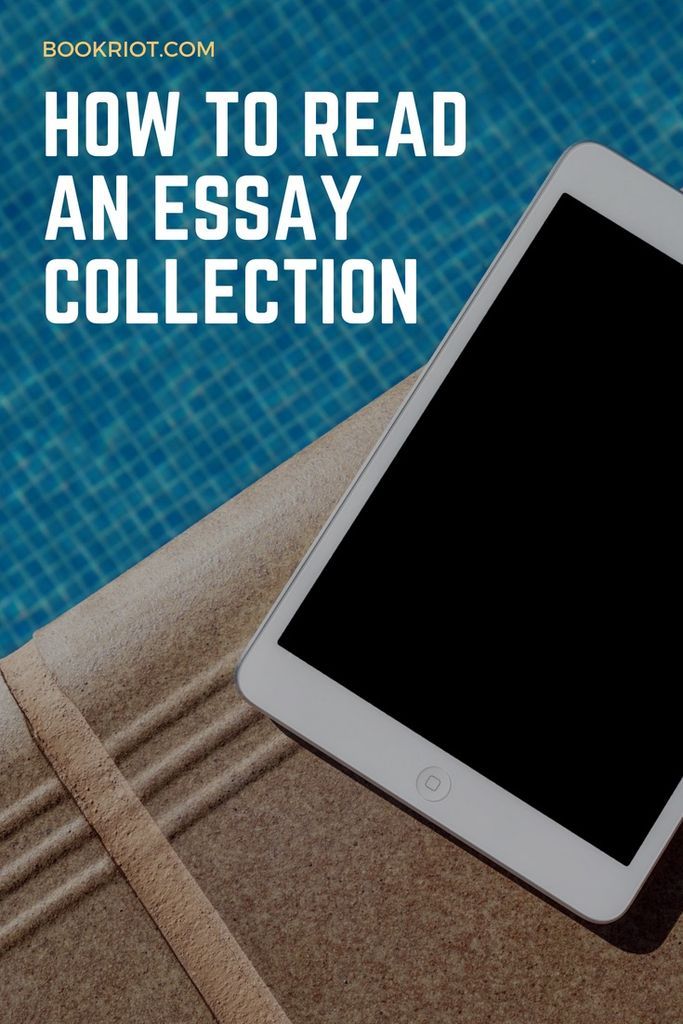This content contains affiliate links. When you buy through these links, we may earn an affiliate commission.
Rebecca holds a PhD in English and is a professor at Norwalk Community College in Connecticut. She teaches courses in composition, literature, and the arts. When she’s not reading or grading papers, she’s hanging out with her husband and son and/or riding her bike and/or buying books. She can't get enough of reading and writing about books, so she writes the bookish newsletter "Reading Indie," focusing on small press books and translations.
Newsletter: Reading Indie
Twitter: @ofbooksandbikes
View All posts by Rebecca Hussey
How to read an essay collection? You may think no instructions are necessary. All you do is open the book, look over the table of contents, get going on the first essay, and proceed from there as usual. You can certainly read collections that way, and I sometimes do. But you might get more out of the experience if you keep a few things in mind before jumping in. And perhaps these suggestions will encourage you to pick up an essay collection if that’s not the kind of thing you usually read. Here are some points to consider:

- Make sure you have the right book for you. You can read essays about literally anything! The variety of subject matter available is astounding, and writing styles vary broadly as well. You can find collections that are entirely personal, ones that are entirely impersonal and based on reporting and research, and ones that have a mix of both. Some essays are poetic, some are funny, some are serious, some have footnotes. Find the subject matter you want to read about and a writing style that works for you. But know also that some essayists are so good you will want to read whatever they write, no matter the subject!
It helps to know that essay collections have different organizational methods, so you will want to read the back cover material and/or the introduction (if there is one) and/or some reviews to find out how your collection is organized. Some are organized chronologically, for example, while others are arranged thematically. Some contain pieces that were all written recently, while others collect work over a long period of time. Some have essays all about one particular theme, while others contain a hodgepodge. Some collections are all by one author, while others have a different author for each piece.
Knowing the organizing principle of your chosen collection will help you figure out whether it would be better to read the essays in order or whether it’s fine to skip around. Very often, it’s fine to skip around and start with the essays that appeal to you most, but sometimes you will have a better experience if you read in order. For example, it’s often best to read a collection by a single author with linked essays (meaning those that touch on a similar theme or develop a similar idea) or autobiographical essays this way. In this case, the essays are likely in thematic or chronological order and can have the feel of a memoir.
The types of collections best suited for jumping around include those with multiple authors, since you might want to read particular authors first and since the essays aren’t likely to depend on other pieces to make sense. Also, books that bring together a large selection of a single author’s work—or that collect every essay an author has ever published—can be easily read out of order. And sometimes single-author collections simply don’t have a common theme or through-line and so the order genuinely doesn’t matter.
It’s really, truly, genuinely fine not to read every piece in a collection! Knowing the organizing principle can also help you figure out whether you want to read every essay in the book or not. Again, books with linked essays you might want to read in their entirety. The “Collected Works” of so-and-so great essayist? Maybe, maybe not. You might read a page or two of each essay and finish only the ones that catch your interest. I’m of the opinion that if you have read most of the pieces in a book, you are free to count it as finished, but that’s up to you.
The speed with which you read an essay collection does not matter. You might finish a book in one sitting or you might take years to finish. Either way is fine! One of the best things about reading essay collections is that you can dip in and out, read a little or a lot, and it’s all fine. You won’t lose the thread of a story like you might in a novel.
Finally, be aware that essays may vary in quality, especially if written over a long period or if by multiple authors. The “Collected Works” of so-and-so-great essayist might start out with some not-so-great pieces and get stronger as you go along. You might find you love some essays in a multi-author collection and strongly dislike others. This is part of the risk but also the fun of picking up a multi-author collection. You might find your new favorite author in it!
Now that you know how to read an essay collection, you might want some recommendations. My top three picks are:
True Story Newsletter
Sign up for True Story to receive nonfiction news, new releases, and must-read forthcoming titles.
Thank you for signing up! Keep an eye on your inbox.
Want more? Check out 100 Must-Read Essay Collections to start and then suggestions for the 2018 Read Harder essay anthology task, great collections published in 2017 and more published in 2016.
Then tell me what your favorite essay collection is!













